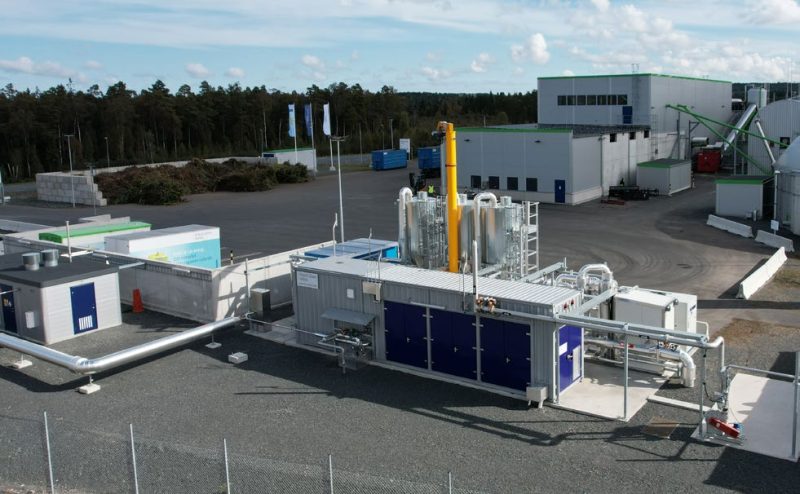Technology for Producing Biomethane and Recovering CO2
Technology for Producing Biomethane and Recovering CO2
Energy, Biofuels and Decarbonisation
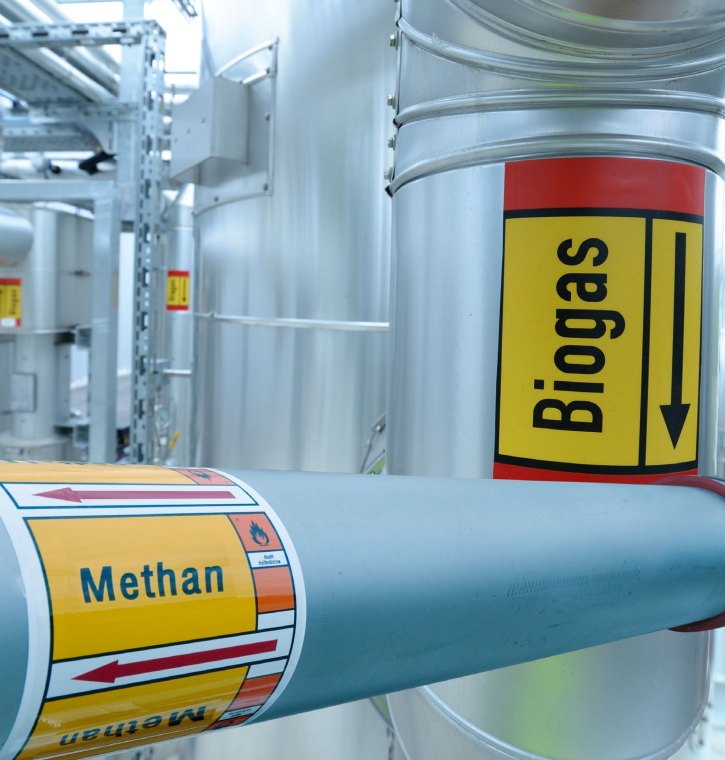
Taking Resource Management a Step Further
Kanadevia Inova’s gas upgrading technologies treat biogenic raw gases by cleaning them and separating out their carbon dioxide (CO₂) content. This process produces biomethane, a renewable fuel and energy source, as well as CO₂ gas for a wide variety of applications.
Biomethane: A Versatile Fuel and Energy Source
Assuring a reliable supply of energy, sustainable transport and effective climate protection: all these global goals can be furthered by using biomethane as a fuel and energy source.
Biomethane has many benefits. It can be used to generate electricity and heat in combined heat and power (CHP) plants or decentralised cogeneration units. Biomethane is also used as CBG or LBG (compressed or liquefied biomethane gas) as a substitute for natural gas to fuel gas-powered vehicles.
Because it’s of natural gas quality, biomethane can be transported and stored in the existing gas grid infrastructure, meaning that it doesn’t have to be produced and used in the same place. In contrast to fossil fuels and other renewable types of energy, biomethane is also permanently available and can easily be produced in the required quantities.
This makes biomethane an ideal supplement to sustainable energy concepts and a valuable means of achieving global climate protection targets, especially in the transport sector.
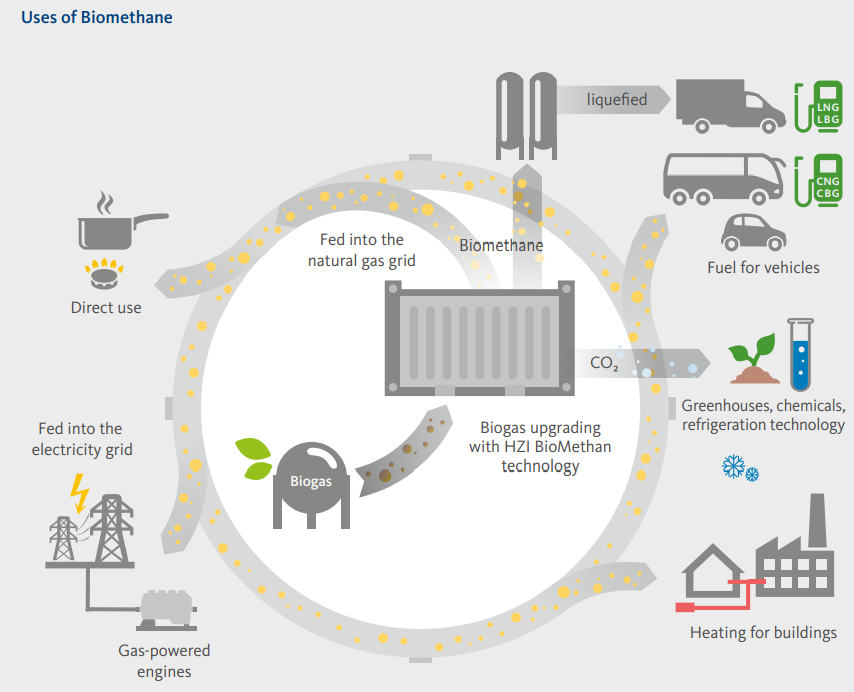
Biomethane Produced from a Variety of Raw Gases
Biogenic raw gases can be produced from any kind of biomass, including energy and food crops, residues and manure, biowaste from households, wholesalers and retailers, municipal green waste, and leftovers from food production. Biomethane can also be produced from the gas generated by sewage works and landfill sites, augmenting the value they create and helping close the waste management cycle.
Two Types of Process Technology
Depending on the composition of the raw gas, pretreatment may be required. Following this, the gas then enters the main stage in the gas upgrading
process, which involves separating out carbon dioxide and methane. According to how it’s going to be used, for example fed into the gas distribution network or liquefied, the biomethane produced is conditioned to meet the required quality parameters.
There are two methods for separating out the components of the raw gas: pressureless amine scrubbing and membrane technology. The choice depends on the performance, operator or market requirements that must be met. Both processes achieve very highpurity methane with minimal methane slip (methane that escapes and is lost).
CO₂: By-Product for Additional Revenues
Both types of gas upgrading processes produce another useful, high-purity gas: CO₂ product gas. Various industries require carbon dioxide in its different physical states (gaseous, liquid or solid). For example, CO₂ is used as fertiliser in greenhouses, as a fire-extinguishing agent or refrigerant, as a raw material in the chemical industry, and also in the food industry.
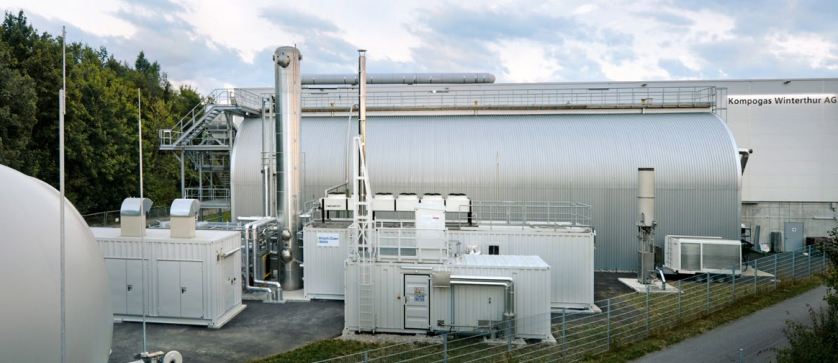
Biogas treatment in Winterthur, Switzerland, using Kompogas® dry fermentation with amine scrubbing
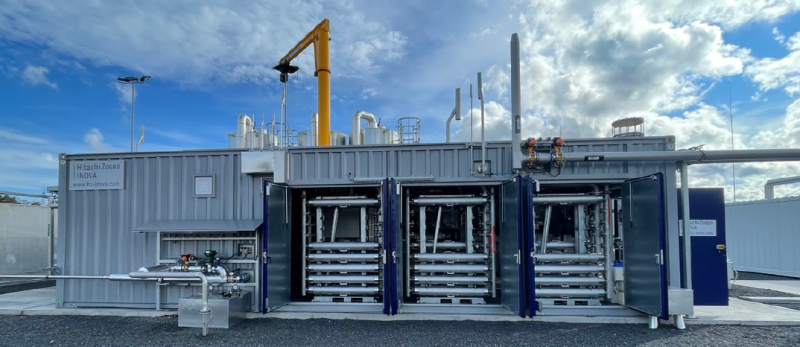
Gas upgrading plant with membrane technology
An Overview of Gas Upgrading Technologies
Pretreatment
For the raw gas to be treated reliably it first has to be dried, pre-compressed and pre-cleaned. This is achieved by using a filter system containing specially coated activated carbon to remove hydrogen sulphide and other undesired accompanying substances.
Pressureless Amine Scrubbing
In pressureless amine scrubbing the pre-purified raw gas flows through the core component of the process: a scrubbing column with column packing and an amine scrubbing solution. This solution is allowed to trickle into the column from top to bottom in the opposite direction to the gas flow. Due to its chemical properties, the amine scrubbing solution absorbs the CO₂ contained in the raw gas. The column packing increases the contact surface, allowing for a more intensive exchange of materials between the gas and liquid phase.
The resulting high-purity biomethane is drawn off at the top of the column, while the used amine scrubbing solution is drained off at the bottom and regenerated by applying heat to remove the carbon dioxide. This completely restores the solution’s absorption capacity so that it can be re-fed into the scrubbing column for the separation process.
This chemical process is suitable for sites where there is a source of heat for regenerating the amine scrubbing solution (for example a CHP unit), where the product gas has to meet very high requirements, and where the biomethane has to be at low pressure at the output of the treatment plant for transfer to the injection station.
Membrane Technology
In membrane-based gas permeation, the raw gas is additionally pretreated, and after being compressed to operating pressure, dried, heated and fine-cleaned is fed into membrane modules under pressure. These modules consist of several thousand polymer hollowfibre membranes bundled together in a stainless-steel housing. The separation of the CO₂ contained in the raw gas from the methane takes place by selective permeation: owing to different transport speeds and solubilities in the polymer, the CO₂ permeates through the surface of the membranes more quickly than the methane. The methane is retained in the membranes and discharged from the modules as a product gas at the end of the process. Separating in three module stages ensures maximum extraction from the material flows.
This physical process is suitable for installations with low, stable and predictable electricity costs, where the volumes of raw gas or feed gas are small and subject to fluctuation, and
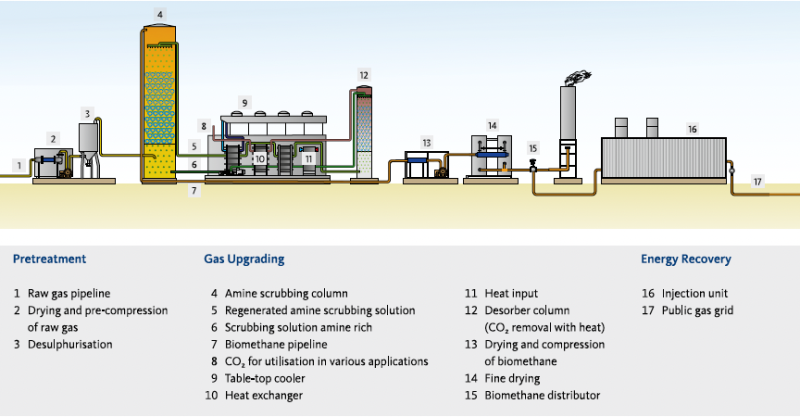
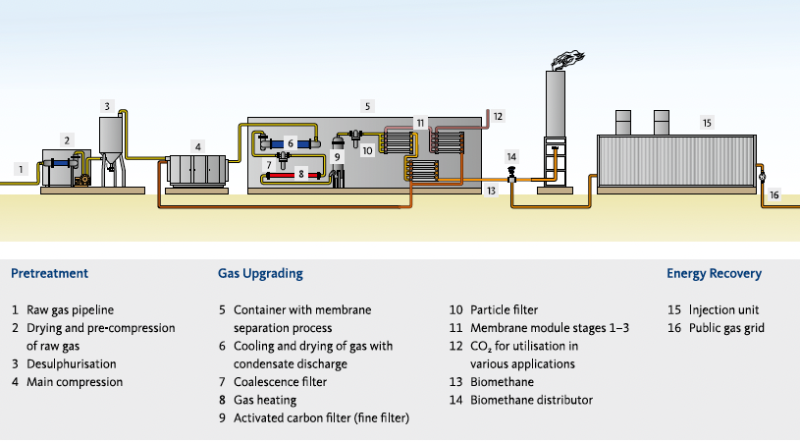

Value-Adding Technology
Protecting the Climate by Treating Flue Gas
The technology used for CO₂ separation can also be used for treating flue gas. The flue gas produced by industrial and manufacturing plants can be cleaned by separating the carbon dioxide contained in it. The CO₂ produced can be sold as a product gas. For example, a wood processing business with a woodfired power station supplies the CO₂ from its waste gas treatment to a nearby greenhouse, where it can be used for growing plants. When carbon dioxide is liquefied it can be produced and used at separate locations. Besides the additional revenues, it’s an opportunity for companies to improve their carbon footprint.
Power-to-Gas, a Technology of the Future
Power to Gas (PtG) may integrate gas upgrading to enable different renewable energy technologies to be combined intelligently and thus very effectively. The high-purity CO₂ from gas upgrading can be used in the Power to Gas methane production process to produce synthetic natural gas (SNG), while the waste heat from methanation and electrolysis can be used to regenerate the amine scrubbing solution, if this process is used for CO₂ and methane separation.
Sustainable Mobility
Biomethane can be fed into the natural gas grid as compressed biomethane gas (CBG) and supplied to filling stations as fuel for vehicles powered by natural gas.
However, this renewable energy source is especially valuable in its liquefied form, where it can be used for heavy goods vehicles and long-distance freight transport. In contrast to compressed natural gas (CNG) and CBG, liquefied natural gas (LNG) and LBG enable vehicles to drive long distances on a low-volume fuel tank. Electric vehicles have not yet become a viable alternative for this type of transport, so LBG offers unparalleled advantages: Increasing the percentage of fuel made from renewables, and reducing greenhouse gases, NOx emissions, air and noise pollution. Proven vehicle and filling-station technology is already available. The transport sector in particular offers great potential for decarbonisation.
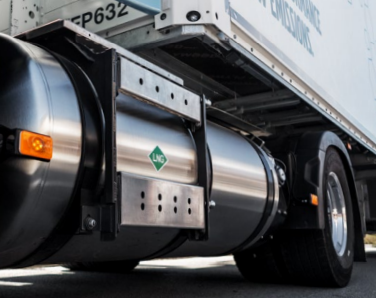
Lorry with LNG tank (Photo: Volvo Truck Corporation)
One-Stop Gas Upgrading Expertise from a Single Supplier
Kanadevia Inova BioMethan GmbH
The Kanadevia Inova Group provides plant technology for producing biomethane and recovering carbon dioxide via Kanadevia Inova BioMethan GmbH. The German company augments the Kanadevia Inova Group’s Renewable Gas capabilities. These technologies can also be used in combination with the Kanadevia Inova’s Kompogas® and EtoGas installations.
The Kanadevia Inova BioMethan team combines expertise and many years of practical experience in gas upgrading technology. To date, more than 100 plants are in operation worldwide. The plants are built with a compact container design at the company’s main site near Hamburg. Six service locations in Europe
guarantee quick-response, professional service and maintenance. Beyond this, for example in North America, Kanadevia Inova BioMethan is represented by Kanadevia Inova’s
subsidiaries worldwide, and by partner companies in the relevant countries.
Kanadevia Inova BioMethan is certified in accordance with DIN EN ISO 9001, DIN EN ISO 3834-3, BS OHSAS 18001:2007, the European Pressure Equipment Directive 2014/23/EC Module H, TSSA, and ASME.
The Highest Standards of Service
Comprehensive services and after sales packages for the best possible performance and the reliable and safe long-term operation of systems round off the Kanadevia Inova BioMethan portfolio. These services range from the supply of spare parts and maintenance as well as repair work to comprehensive service contracts.
Our service contracts for individual plants are developed to meet the specific needs of the customer. Plant operators have the choice between the procurement and delivery of individual components, servicing based on the costs and working hours, and various types of service agreement:
– Kanadevia InovaBM Service Level 1: Basic maintenance, including on-call service
– Kanadevia InovaBM Service Level 2: Minimum replacement and wear parts package, including emergency call-out
– Kanadevia InovaBM Service Level 3: Extensive replacement and wear parts package, including emergency call-out, with an availability guarantee and additional services
All our contracts can be extended individually by agreement.
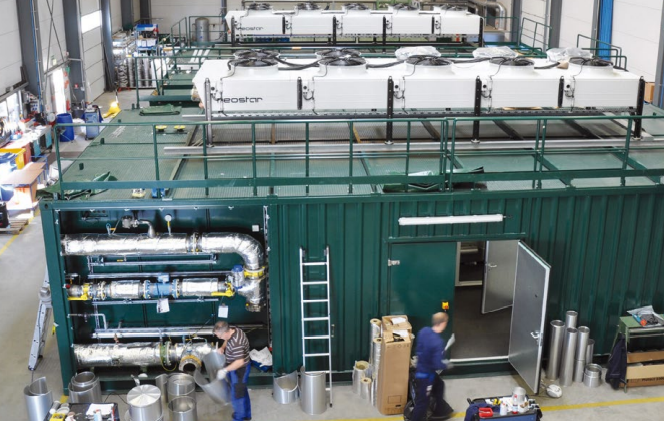
Production facility at the site in Zeven, Germany
